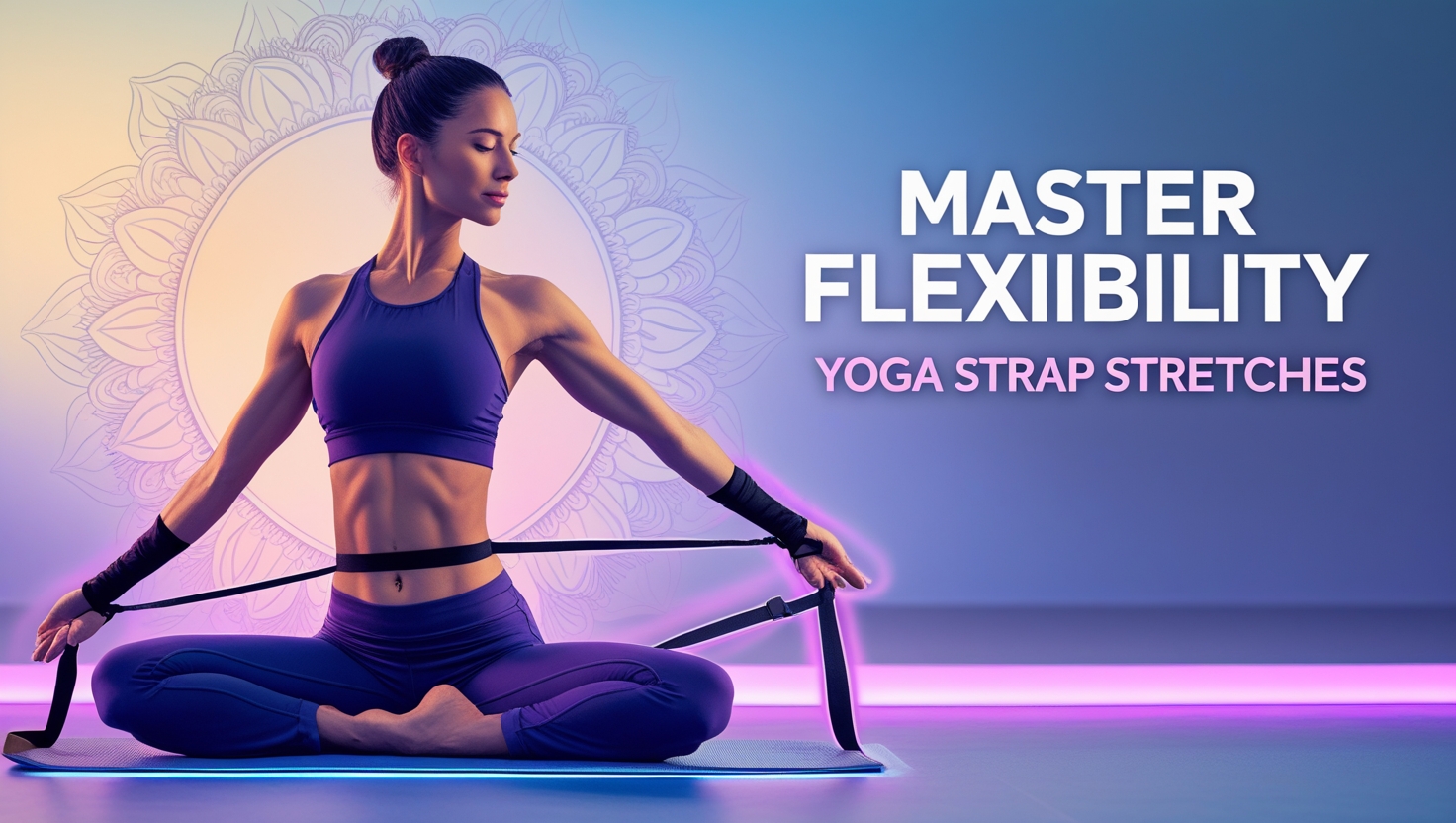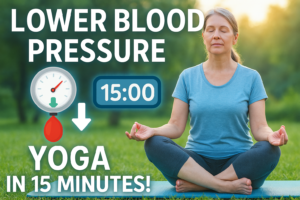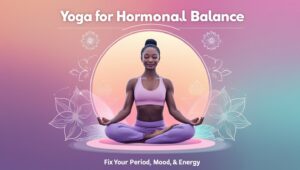Yoga is a timeless practice that not only strengthens the body but also nurtures mental well-being by promoting mindfulness, reducing stress, and fostering a sense of inner peace. Through consistent practice, yoga encourages the release of tension, enhances focus, and supports emotional resilience, making it a holistic tool for both physical and mental health. Among the many tools available to enhance your yoga practice, the yoga strap stands out as one of the simplest yet most effective. Whether you’re a beginner aiming to improve your flexibility or an experienced yogi looking to deepen your poses, a yoga strap can be your best companion. In this article, we’ll explore how to use a yoga strap, share seven effective yoga strap stretches, and uncover the numerous benefits it offers. Additionally, we’ll dive into advanced techniques, tips for maintenance, and how to incorporate a strap into a variety of yoga styles for a comprehensive experience.
What is a Yoga Strap?
A yoga strap is a long, durable band made from cotton, nylon, or similar materials. It often comes with adjustable buckles to modify its length according to your needs. This simple tool is designed to help you achieve poses that might otherwise feel out of reach, improve alignment, and prevent injury. With the right usage, a yoga strap can act as an extension of your arms or legs, allowing for enhanced stretching and improved posture.
🧘 Yoga straps come in different lengths and widths, so choosing the right one based on your body type and practice style is crucial. For instance, a longer strap (8-10 feet) is ideal for taller individuals or for poses like Seated Forward Bend where additional reach is required, while shorter straps work well for basic stretches or poses like Bound Angle Pose, where less length is needed for effective support.
Why Use a Yoga Strap?
Yoga straps offer support and make challenging poses accessible for people of all flexibility levels. Here are some key reasons to incorporate a yoga strap into your routine:
🌟 Improved Flexibility: Helps you stretch deeper without overstraining, gradually increasing your range of motion.
🧍 Enhanced Alignment: Encourages proper posture in poses, preventing common misalignments.
🚫 Injury Prevention: Reduces the risk of overstretching or straining muscles.
🌍 Accessibility: Makes yoga inclusive for all, regardless of flexibility, strength, or experience.
🔄 Versatility: Useful for a wide range of stretches, poses, and even non-yoga exercises like Pilates or resistance training.
Additionally, yoga straps can help address muscle imbalances by enabling a balanced stretch on both sides of the body. This is particularly helpful for athletes or individuals recovering from injuries.
How to Use a Yoga Strap
Using a yoga strap effectively requires an understanding of your body’s limits and alignment. For example, when practicing Seated Forward Bend, keeping the strap taut and your back straight helps maintain proper alignment and prevents strain. Misalignment, such as rounding the spine, can reduce the effectiveness of the pose and increase the risk of discomfort. Mindful use of the strap ensures you stretch safely and effectively. Here are some general tips:
🎚️ Adjust the Length: Shorten or lengthen the strap based on the pose you’re practicing. For instance, a shorter length provides better control in seated stretches, while a longer strap aids in standing or reclining poses.
🔁 Wrap or Loop the Strap: Create secure loops for better grip, especially for poses requiring one or both feet.
🎯 Maintain Tension: Keep the strap taut but not overly tight to maintain stability and support.
🚦 Listen to Your Body: Avoid pushing beyond your comfort zone to prevent injury.
🛠️ Integrate with Props: Combine the strap with blocks or cushions for additional support in restorative poses.
Practicing with mindfulness and patience ensures safe progress and maximizes the benefits of using a yoga strap.
7 Yoga Strap Stretches You Must Try
1. Seated Forward Bend (Paschimottanasana)

How to Do It: Sit with your legs extended forward. Loop the strap around your feet and hold it with both hands. Gently pull yourself forward while keeping your back straight. Aim to fold from the hips rather than rounding your spine.
🦵 Benefits: Stretches the hamstrings, calves, and lower back, improving flexibility and relieving tension.
2. Shoulder Stretch

How to Do It: Hold the strap behind your back with both hands. Move your hands closer together along the strap as you feel comfortable. Lift your arms gently to stretch the shoulders.
🤲 Benefits: Opens up tight shoulders, relieves upper back tension, and improves posture.
3. Reclining Leg Stretch (Supta Padangusthasana)

How to Do It: Lie on your back and loop the strap around one foot. Extend the leg upward while holding the strap. Keep the other leg straight on the ground. You can vary the stretch by pulling the raised leg slightly to the side.
🧍♂️ Benefits: Increases hamstring flexibility, strengthens the core, and enhances hip mobility.
4. Bound Angle Pose (Baddha Konasana)

How to Do It: Sit with your feet pressed together and knees bent outward. Loop the strap around your feet and hold the ends. Gently pull yourself forward, keeping your back straight.
Benefits: Opens the hips, stretches the inner thighs, and promotes relaxation.
5. Dancer’s Pose (Natarajasana)

How to Do It: Stand on one leg and loop the strap around the opposite foot. Hold the strap with both hands and lift the foot behind you while leaning forward. Keep your gaze steady for balance.
⚖️ Benefits: Improves balance, stretches the thighs and chest, and strengthens the standing leg.
6. Extended Side Angle Pose (Utthita Parsvakonasana)

How to Do It: From a lunge position, loop the strap around your back leg’s thigh. Hold the other end with your top hand and stretch upward. Adjust the strap length as needed for a secure hold.
🔄 Benefits: Enhances flexibility in the side body, thighs, and groin while improving strength.
7. Cow Face Pose (Gomukhasana)

How to Do It: Sit with one knee stacked over the other. Hold the strap with one hand overhead and the other hand behind your back. Try to bring your hands closer together along the strap.
🐄 Benefits: Stretches the shoulders, triceps, chest, and hips.
Advanced Techniques with a Yoga Strap
For experienced practitioners, yoga straps can deepen stretches and add complexity to familiar poses. For example, in the advanced pose Marichyasana (Sage Pose), you can use a strap to bridge the gap between your hands if they don’t naturally bind. Here’s a step-by-step guide:
🪑 Start in a Seated Position: Sit on the mat with one leg extended forward and the other bent, placing the foot close to your hip.
🔄 Wrap the Strap: Loop the strap around the wrist of your extended arm and the hand of your bent arm behind your back.
🤲 Reach and Bind: Use the strap to gently pull your hands closer together, ensuring your spine remains tall and aligned.
🌬️ Deepen the Pose: Gradually tighten the strap to enhance the stretch in your shoulders and hips, maintaining steady breathing.
This technique not only enhances flexibility but also builds strength and control. Additionally, straps can be utilized in inversions like supported headstands, providing stability and confidence as you refine your balance.
Benefits of Yoga Strap Stretches
Using a yoga strap can transform your practice in many ways. Here’s how:
💪 Deepens Your Stretches: Achieve poses with greater ease and depth without compromising alignment.
🧍 Improves Alignment: Maintains proper posture and alignment, reducing the risk of injury.
🏋️ Builds Strength: Strengthens muscles as you hold stretches and engage stabilizing muscles.
🧘 Promotes Relaxation: Encourages mindful movement, reduces tension, and supports a meditative state.
🌟 Supports Beginners: Makes yoga more accessible for those with limited flexibility.
🔄 Enhances Recovery: Aids in gentle stretching for injury rehabilitation and muscle soreness.
Tips for Choosing the Right Yoga Strap
📏 Length: Opt for a longer strap (8-10 feet) for versatility in various poses.
🧵 Material: Look for durable, non-slip materials like cotton or reinforced nylon.
🔒 Buckle Type: Choose sturdy metal or plastic buckles for secure adjustments.
🤗 Comfort: Ensure the strap feels comfortable against your skin, avoiding irritation during prolonged use.
🎨 Color and Design: While not functional, a visually appealing strap can motivate you to practice more regularly.
FAQs
1. Who can use a yoga strap?
Anyone can use a yoga strap, regardless of their flexibility or experience level. It’s especially helpful for beginners and those with limited mobility.
2. Can I replace a yoga strap with something else?
Yes, you can use alternatives like belts, scarves, or resistance bands. However, a yoga strap is specifically designed for comfort and safety, making it the best choice.
3. How often should I use a yoga strap?
You can incorporate a yoga strap into your practice as often as needed, depending on your goals and routine. Regular use accelerates flexibility gains.
4. Are yoga straps suitable for injury recovery?
Yes, they can support gentle stretching and rehabilitation under the guidance of a healthcare professional. Yoga straps are often recommended for physical therapy.
5. What is the best way to clean a yoga strap?
Wash it gently with mild soap and water, then air dry to maintain its durability. Ideally, clean your yoga strap once every 2-3 weeks if used frequently, or more often if it gets visibly dirty, to ensure hygiene without damaging the material. Avoid using harsh detergents or machine drying.















Add comment